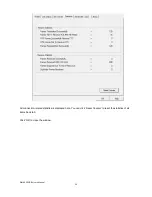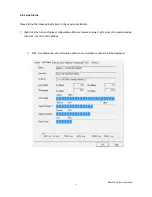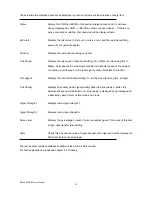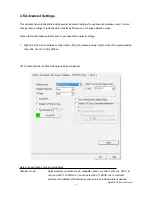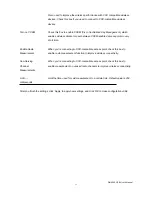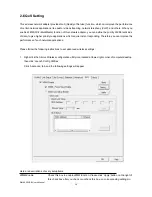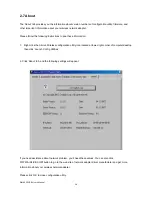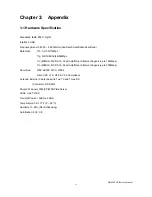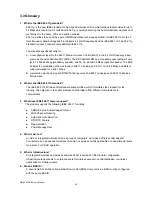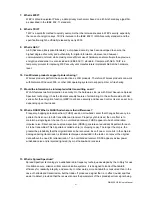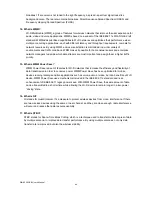
WN-5000 USB
User’s Manual
44
broadcast. If a receiver is not tuned to the right frequency, a spread –spectrum signal looks like
background noise. There are two main alternatives, Direct Sequence Spread Spectrum (DSSS) and
Frequency Hopping Spread Spectrum (FHSS).
14. What is WMM?
Wi-Fi Multimedia (WMM), a group of features for wireless networks that improve the user experience for
audio, video and voice applications. WMM is based on a subset of the IEEE 802.11e WLAN QoS draft
standard. WMM adds prioritized capabilities to Wi-Fi networks and optimizes their performance when
multiple concurring applications, each with different latency and throughput requirements, compete for
network resources. By using WMM, end-user satisfaction is maintained in a wider variety of
environments and traffic conditions. WMM makes it possible for home network users and enterprise
network managers to decide which data streams are most important and assign them a higher traffic
priority.
15. What is WMM Power Save?
WMM Power Save is a set of features for Wi-Fi networks that increase the efficiency and flexibility of
data transmission in order to conserve power. WMM Power Save has been optimized for mobile
devices running latency-sensitive applications such as voice, audio, or video, but can benefit any Wi-Fi
device. WMM Power Save uses mechanisms included in the IEEE 802.11e standard and is an
enhancement of IEEE 802.11 legacy power save. With WMM Power Save, the same amount of data
can be transmitted in a shorter time while allowing the Wi-Fi device to remain longer in a low-power
“dozing” state.
16. What is GI?
GI stands for Guard Interval. It’s a measure to protect wireless devices from cross- interference. If there
are two wireless devices using the same or near channel, and they are close enough, radio interference
will occur and reduce the radio resource usability.
17. What is STBC?
STBC stands for Space-Time Block Coding, which is a technique used to transfer multiple copies of data
by multiple antenna, to improve data transfer performance. By using multiple antennas, not only data
transfer rate is improved, but also the wireless stability.

